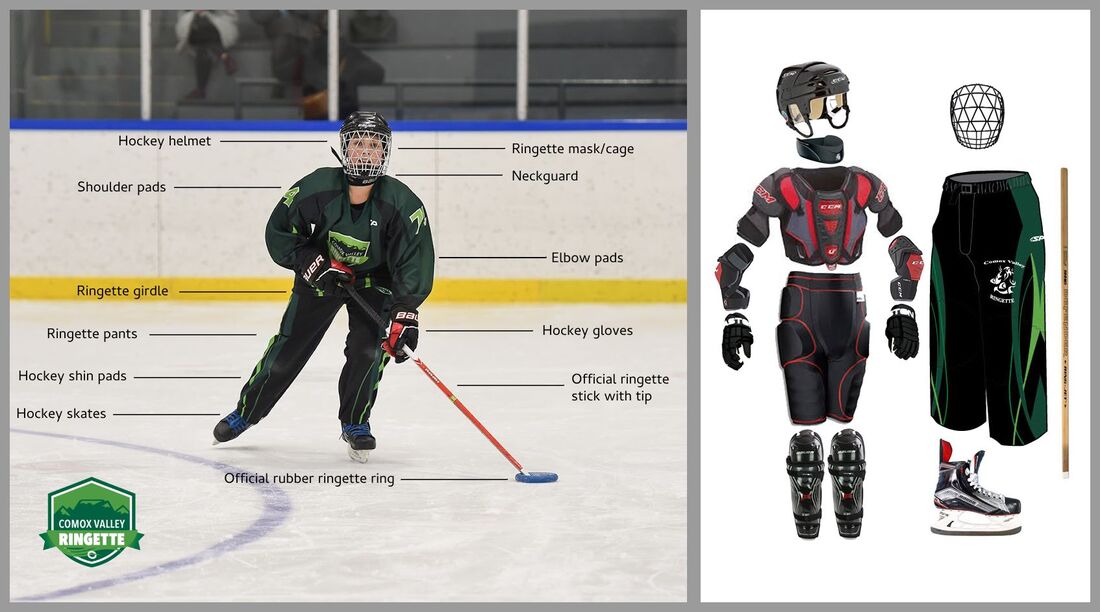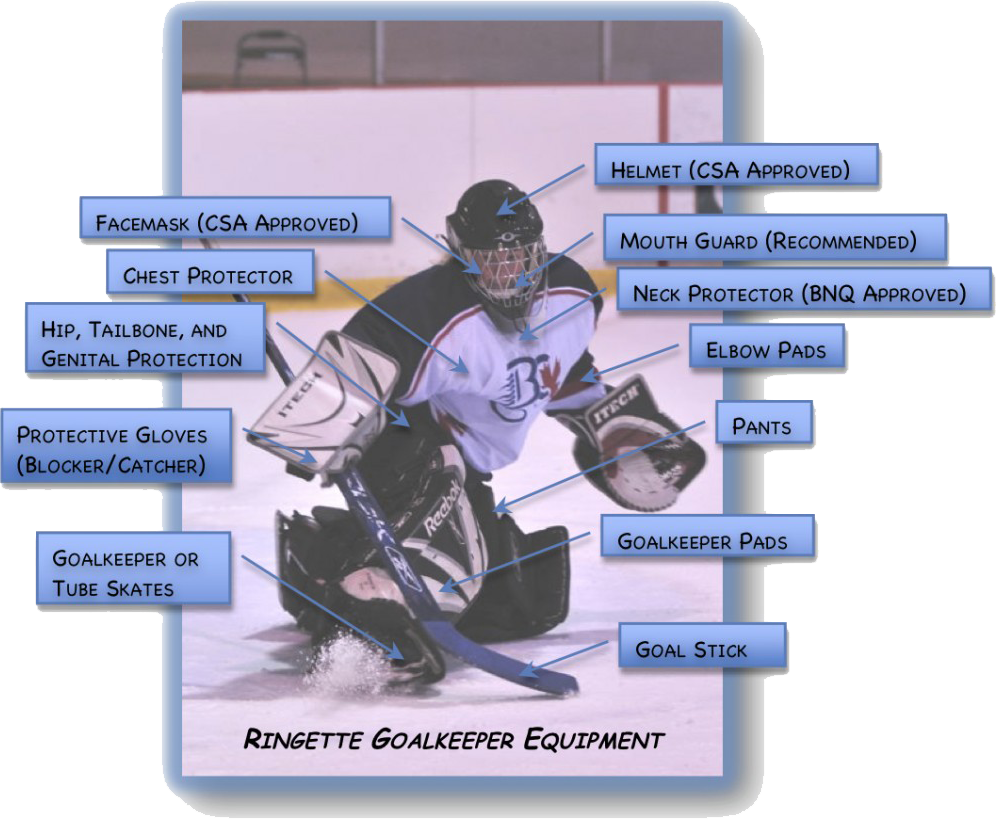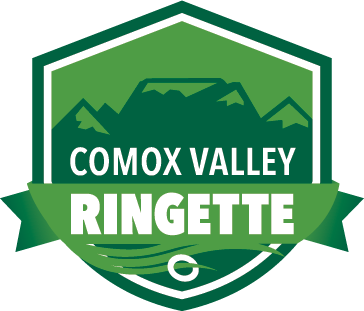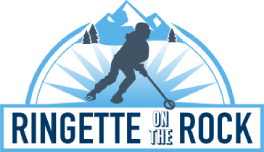It can sometimes be hard to find ringette equipment in the Comox Valley and we also understand that new, full price equipment can be expensive for families just starting out in this wonderful sport. So... we have started an equipment rental program! Here is how it works:
Ringette Sticks
A basic stick is available for free for your first year of ringette. Please return your stick to your team manager at the end of the year.
Ringette Cage: $10/year
$50 to rent for the year. If returned in good condition you will receive $40 back.
Ringette Girdle: $10/year
$50 to rent for the year. If returned in good condition you will receive $40 back.
Team Jerseys and Pants
$50 to rent for the year. If returned in good condition you will receive $40 back. We encourage you to keep jerseys and pants in a pillowcase or separate bag in order to ensure they aren't damaged by skates or velcro.
Ringette Sticks
A basic stick is available for free for your first year of ringette. Please return your stick to your team manager at the end of the year.
Ringette Cage: $10/year
$50 to rent for the year. If returned in good condition you will receive $40 back.
Ringette Girdle: $10/year
$50 to rent for the year. If returned in good condition you will receive $40 back.
Team Jerseys and Pants
$50 to rent for the year. If returned in good condition you will receive $40 back. We encourage you to keep jerseys and pants in a pillowcase or separate bag in order to ensure they aren't damaged by skates or velcro.
Equipment
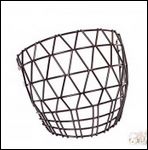
Ringette equipment is almost the same as hockey gear especially in the early years. There are some key differences though.
The association has an online gear swap on facebook. We recommend Blue Toque for second hand gear at a good price and Happy's Source for Sports has a great ringette selection including sticks and face masks. We understand that the cost of gear can be prohibitive when playing an ice sport and we are committed to helping you get on the ice. Please contact us if you need gear or financial support to get your athlete on the ice. We are committed to keeping ringette affordable for families.
The following is a list of the equipment a ringette player needs to wear while on the ice:
**Players can wear hockey pants with socks instead of a ringette girdle and pants.
The association has an online gear swap on facebook. We recommend Blue Toque for second hand gear at a good price and Happy's Source for Sports has a great ringette selection including sticks and face masks. We understand that the cost of gear can be prohibitive when playing an ice sport and we are committed to helping you get on the ice. Please contact us if you need gear or financial support to get your athlete on the ice. We are committed to keeping ringette affordable for families.
The following is a list of the equipment a ringette player needs to wear while on the ice:
- CSA approved hockey helmet
- Ringette face mask: the kind with the triangular openings - leave all of the stickers on!
- BNQ approved neck protector
- Elbow pads
- Shoulder pads (U19 division and under)*
- Protective (ie hockey) gloves
- Girdle (hip/tailbone/genital protector)**
- Jill or jock strap if player is using hockey pants
- Shin guards
- Hockey/ringette skates (no picks)
- Ringette pants**
- Ringette stick
- Jersey
**Players can wear hockey pants with socks instead of a ringette girdle and pants.
Ringette equipment can be purchased locally at number of stores:
Happy’s Source for Sports - 256 - 6th Street in Courtenay
Blue Toque Sports Swap (used sporting equipment) - 120 5th St in Courtenay
Economic hockey starter kits are available at Walmart and Canadian Tire for younger children. Be sure to purchase a ringette mask and ringette stick from one of the other vendors listed above or online at ringettestore.com
Happy’s Source for Sports - 256 - 6th Street in Courtenay
Blue Toque Sports Swap (used sporting equipment) - 120 5th St in Courtenay
Economic hockey starter kits are available at Walmart and Canadian Tire for younger children. Be sure to purchase a ringette mask and ringette stick from one of the other vendors listed above or online at ringettestore.com
What Parents Need to Know about Equipment
Sticks
Sticks can NOT be made from broken hockey sticks. Commercial ringette sticks can be bought inexpensively and they have a metal or plastic tip to prevent mushrooming. The maximum length is to the height of the underarm with arm extending 90 degrees to the body standing in skates. Individual players may prefer a shorter stick.
Equipment should be dried after each use. A small cloth should be part of each player’s bag for wiping skates and sticks should be carried so the playing end does not bang on the ground as that damages the tip.
Skates
Skates are the most important as they provide support, mobility and protection. The counter (heel area) and ankle area should be stiff. You can test the heel area by grasping the skate from behind and pinching the two sides together. Twist them – are they soft, limp or pliable? Cheaper skates have cardboard and poor leather in the counter area and when wet or under strain, it will break, crack or soften. The quality of blade determines how often it has to be sharpened, hence, how long it lasts.
When fitting skates, start with one pair of light-weight synthetic socks (cotton socks tend to stick to the skin when wet and cause blisters) and your shoe size. Youth sizes 6 - 13 1/2 , Junior sizes 1 – 6 and Adult sizes 7+. If the skates are too large and you try to take up slack by tightening the laces, the blood circulation will be restricted resulting in cold feet. An ideal fit will place the toe 1/4 inch from the front of the skate. Pretty hard to judge! You can measure this by pushing their foot to the front of the skate. When you can place one finger behind the heel the skate is the right size. The boot should hold the heel ridged like a medical cast. A narrow foot may require leather inserts to take up space in the heel side area. All children have strong ankles but not strong enough for the transition period from shoe to blade. It comes after varying lengths of time. For several years, all children need unyielding ankle support.
To tie the skate, divide it into thirds. The bottom third should be moderate tension (take up slack). The middle third should be slightly looser. The top third needs to be pulled tightly (taking up all loose leather holding the foot firmly). These are relative terms. Good skates will not require bull strength to tie. Do not wrap laces that are too long around the ankle area as it restricts ankle movement. Sizes are not standard. Try them on. Spring is a good time for used equipment. Good skates can be purchased for between $25.00 and $75.00 depending on new, used and sale price. Proper fitting quality skates will improve their skating up to 30%, last for a half dozen children and make skating more fun.
Sticks can NOT be made from broken hockey sticks. Commercial ringette sticks can be bought inexpensively and they have a metal or plastic tip to prevent mushrooming. The maximum length is to the height of the underarm with arm extending 90 degrees to the body standing in skates. Individual players may prefer a shorter stick.
Equipment should be dried after each use. A small cloth should be part of each player’s bag for wiping skates and sticks should be carried so the playing end does not bang on the ground as that damages the tip.
Skates
Skates are the most important as they provide support, mobility and protection. The counter (heel area) and ankle area should be stiff. You can test the heel area by grasping the skate from behind and pinching the two sides together. Twist them – are they soft, limp or pliable? Cheaper skates have cardboard and poor leather in the counter area and when wet or under strain, it will break, crack or soften. The quality of blade determines how often it has to be sharpened, hence, how long it lasts.
When fitting skates, start with one pair of light-weight synthetic socks (cotton socks tend to stick to the skin when wet and cause blisters) and your shoe size. Youth sizes 6 - 13 1/2 , Junior sizes 1 – 6 and Adult sizes 7+. If the skates are too large and you try to take up slack by tightening the laces, the blood circulation will be restricted resulting in cold feet. An ideal fit will place the toe 1/4 inch from the front of the skate. Pretty hard to judge! You can measure this by pushing their foot to the front of the skate. When you can place one finger behind the heel the skate is the right size. The boot should hold the heel ridged like a medical cast. A narrow foot may require leather inserts to take up space in the heel side area. All children have strong ankles but not strong enough for the transition period from shoe to blade. It comes after varying lengths of time. For several years, all children need unyielding ankle support.
To tie the skate, divide it into thirds. The bottom third should be moderate tension (take up slack). The middle third should be slightly looser. The top third needs to be pulled tightly (taking up all loose leather holding the foot firmly). These are relative terms. Good skates will not require bull strength to tie. Do not wrap laces that are too long around the ankle area as it restricts ankle movement. Sizes are not standard. Try them on. Spring is a good time for used equipment. Good skates can be purchased for between $25.00 and $75.00 depending on new, used and sale price. Proper fitting quality skates will improve their skating up to 30%, last for a half dozen children and make skating more fun.
Goalie Equipment image from BCRA.
